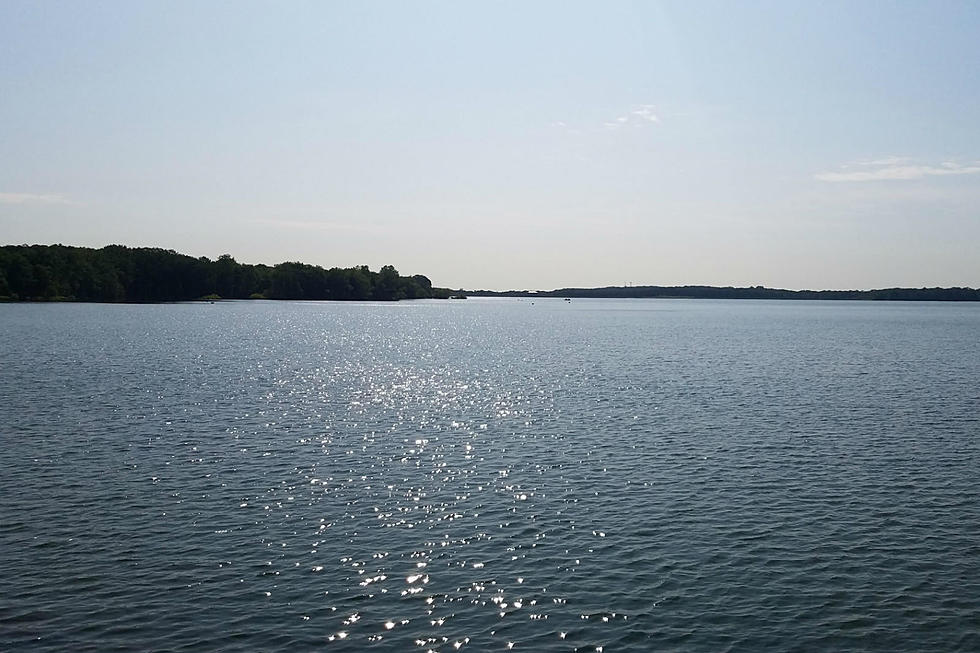
Harmful algal blooms in NJ reservoirs — Is your drinking water safe?
This summer's bumper crop of harmful algal blooms around the Garden State include two reservoirs that feed into drinking water systems.
A record amount of rainfall, sweeping nutrient-rich stormwater into bodies of water amid warm weather appears to have contributed to the blooms, which continue in at least 12 spots as of August.
Cyanobacteria are naturally present in lakes and streams in low numbers but can form dense harmful algal blooms under such conditions, according to the state DEP.
Manasquan Reservoir posted an HAB advisory on Aug. 8.
Spruce Run Reservoir has been under a similar advisory since mid-June.
There are a variety of water quality safeguards in place at both locations and they are very different systems, according to Ken Klipstein, director of Watershed Protection Programs for the New Jersey Water Supply Authority (NJWSA).
The NJWSA Manasquan System is a public community water system with source water that comes from both Manasquan Reservoir and Manasquan River. The 4.67 billion gallon water storage reservoir has "capability to deliver 30 million gallons of water per day to the water utilities that serve Monmouth County," according to the Water Supply Authority.
The Manasquan Water Treatment Plant, right next to Manasquan River and not far from the reservoir, provides 60% of potable water consumed by the communities of Brielle, Sea Girt, Spring Lake, Spring Lake Heights and Wall.
The System also provides raw water to the New Jersey American Water Company for treatment and distribution to other communities in Monmouth and Ocean Counties.
Manasquan has a pump storage system, which controls how much water is being pulled in and from where. The water entering storage before treatment has the lowest levels of any potential contaminants, such as more familiar types of algae, Klipstein said.
NJWSA also can control how deeply water is drawn from within the reservoir, or whether water is drawn from the Manasquan River directly or blended from both sources.
He said the finished water continues to be measured, to ensure that it's fit for consumption.
Klipstein said overall algae has been an issue for Manasquan in recent years, and they are prepared to use an algaecide treatment containing copper sulfate.
"Copper in copper sulfate binds to proteins in fungi and algae. This damages the cells causing them to leak and die," according to the National Pesticide Information Center.
Toxins produced by cyanobacteria are referred to as cyanotoxins, which can at certain levels pose a dangerous for humans, pets, livestock and wildlife.
Cyanobacteria cell counts, which are used to set the level when a bloom is considered an HAB, do not indicate the level of toxins present within a bloom — that requires different testing.
Spruce Run Reservoir in Hunterdon County has been under a harmful algal bloom advisory since June 15, with swimming and other water activities banned amid high levels of cyanobacteria.
The 11 billion-gallon water storage reservoir is part of a water supply system that also consists of Round Valley Reservoir and the Delaware & Raritan Canal Transmission Complex, which collectively can deliver up to 241 million gallons of raw water per day to water utilities that serve Central Jersey, according to the NJWSA.
Spruce Run is an “on-stream” reservoir that is fed entirely by rain flowing through several streams including the Spruce Run and the Mulhockaway Creek.
NJWSA is not responsible for treating drinking water in the Raritan System, but releases water from Spruce Run to meet passing flow requirements in the Raritan River at various locations, according to Klipstein, who also said it takes 24 hours for Spruce Run water to get to New Jersey American Water’s intakes in Bound Brook.
When notified of an HAB within the reservoir, NJAW manages it accordingly to meet all federal and state drinking water standards.
"At this time, cyanotoxins in finished drinking water are not regulated by NJDEP or the USEPA. However, NJWSA does have the capability to qualitatively measure cyanotoxins in the source water and finish water," according to a written statement from the NJWSA.
NJWSA would send finish water samples to a certified lab for further analysis, should a test detect cyanotoxins in the treated finish water from the Manasquan System.
Bloom advisories are handled on a case-by-case basis, and so there's no estimated timetable for when one might dissipate.
A return to "normal" conditions depend on many factors including weather, the size and shape of the water body, and any utilized methods of management or treatment, according to the DEP.
Direct exposure to water with a confirmed HAB may cause allergy-like reactions, flu-like symptoms, gastroenteritis, respiratory irritation and eye irritation.
As for helping prevent such blooms in the first place, it's an issue of nutrient pollution like nitrogen and phosphorus can feed cyanobacteria and cause their populations to bloom.
Residents can try to reduce input of nutrients into their local watershed by limiting fertilizer use, picking up dog waste and inspecting and maintaining septic systems annually.
Additional recommendations include properly storing farm animal manure, avoid feeding wild geese that congregate around ponds and riverbanks, maintaining vegetated buffers around streams and ponds and installing green infrastructure like rain gardens to filter runoff.
More from New Jersey 101.5:
More From New Jersey 101.5 FM









